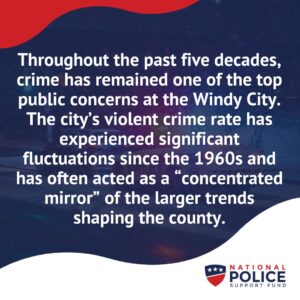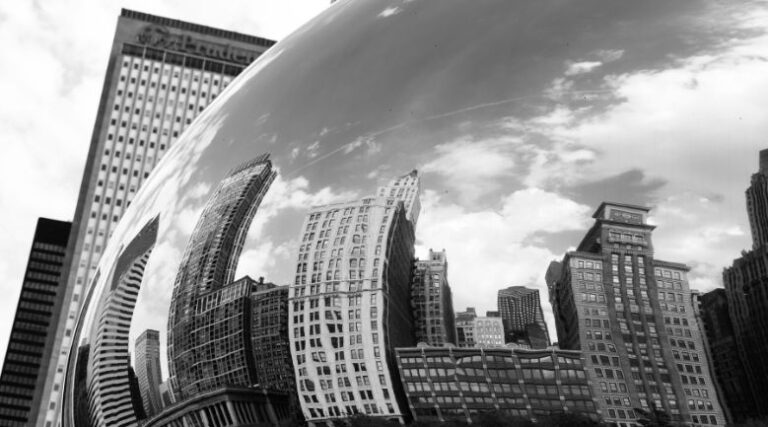Throughout the past five decades, crime has remained one of the top public concerns at the Windy City. The city’s violent crime rate has experienced significant fluctuations since the 1960s and has often acted as a “concentrated mirror” of the larger trends shaping the county.
Why? Perhaps it’s because of its location, at the midpoint between the populous coasts and the more rural communities in middle America. Maybe it’s because its demographics largely reflect the country’s as a whole, or because of the symbolic economic transformation the city experienced between the 1960s and now. Either way, a quick look at the Chicago crime rate can provide one of the fastest tests for any public safety initiative.
Homicides in Chicago- 2024
During the final part of the 20th century, Chicago experienced two distinct peaks in violent crime – one in the early 70s – with 1974 seeing a record 970 murders – and one in the early 90s – which saw 943 murders in 1992 alone.
The new millennium saw the crime emergency decrease, at least temporarily. But just like the rest of the country, Chicago became remarkably unsafe during the post-pandemic years. According to data collected by the City of Chicago, the Windy City saw 772 homicides in 2020 and 797 in 2021 – a very sharp increase when compared to 2019, when the total number of homicides was 498.
Illinois was not the only state taken by a “violent crime storm.” Unemployment, progressive cuts to police departments, unprecedented inflation, and even the mental health effects of social distancing all combined to create a volatile situation.
But in 2024, some rays of sunshine are already peeking at the horizon. As of August 24, Chicago has seen 380 homicides. This is 38 fewer than at the same point in 2023 – and there’s every hope that the curve will continue trending downward.
What Can We Learn from Chicago Crime Statistics?

Violent crime generally occupies a special place in public policy. It is remarkably more harmful than random snatchings or break-ins. It also requires an extra dose of either desperation or lawlessness to harm a fellow citizen deliberately.
Due to its severity, violent crime rates can also tell us a lot about our society as a whole. They can help us spot the disenfranchised and evaluate the policies that are not working.
Who is most affected by violent crime?
According to the Chicago Tribune, the group that is facing the biggest risks from violent crime are African American men aged 20 to 29. The overwhelming majority of them (338) were killed by gunfire.
In fact, out of the 380 homicide victims for the year, 334 were men. Meanwhile, 115 counted a man between 20 and 29 as the victim. The second most affected group is those aged 30 to 39, with 99 victims so far. On the other hand, only 13 homicide victims this year were over 60.
Where are these crimes happening?
So far, the homicide rate seems to follow socioeconomic determinants pretty closely.
The Community of Austin remains the most violent one in the city of Chicago, with 36 homicides for the year. Greater Grand Crossing and South Shore closely follow it.
Over the past decade, several Downtown communities have successfully revitalized, which is reflected in crime rates. For example, the communities of Washington Heights, Washington Park, Logan Square, and Irving Park all count homicide numbers in the single digits.
What Comes Next for Chicago?
Although these figures suggest an optimistic outlook, they still need to catch up to other similarly-sized cities in the country. Any crime reduction is a triumph, but many residents would like to see a more profound drop – perhaps equal to that of New York or Los Angeles.
According to the Sue Ling Gin Foundation Initiative, which works to reduce violent crime in Chicago, the difference may lie in visibility. Despite the enormous work by individual police officers, law enforcement in Chicago isn’t as visible as in other metropolises: it doesn’t have the strict broken windows or stop-and-frisk policies that New York does. Precincts are generally less staffed, preventing them from launching more effective operations.








